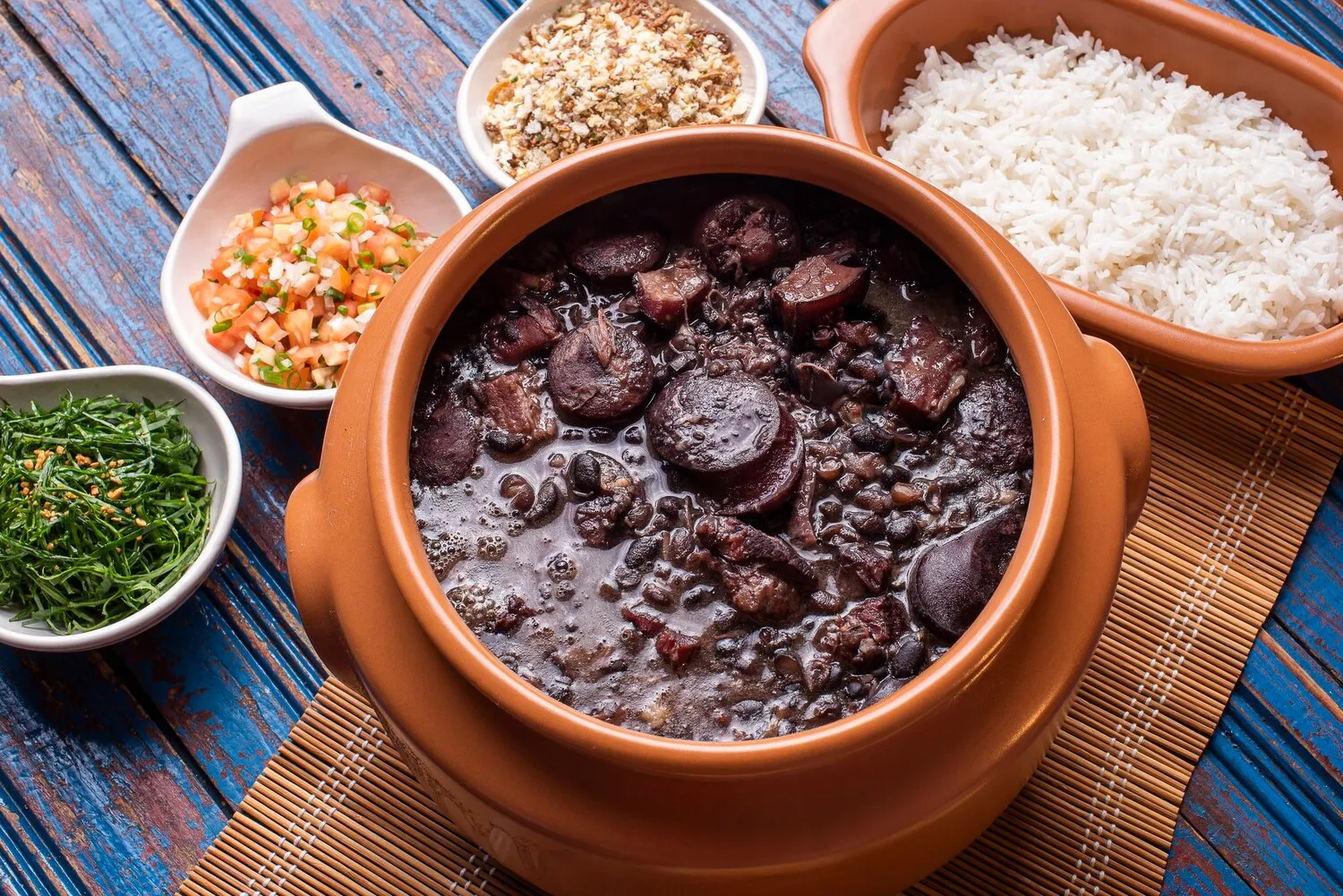
Baião de Dois
A typical Northeastern Brazilian dish made with rice, beans, cheese and sometimes meat.
Nutrition Facts
* The % Daily Value (DV) tells you how much a nutrient in a serving of food contributes to a daily diet. 2,000 calories a day is used for general nutrition advice.
Caruaru Galeteria
Baião de Dois emerged from the harsh realities of the Sertão, the arid backlands of Northeastern Brazil. It's a dish rooted in resourcefulness, born from the need to maximize limited ingredients. Indigenous ingredients combined with influences from Portuguese colonizers and African slaves created a dish representing resilience and cultural fusion.
Baião de Dois is deeply embedded in the culinary identity of Northeastern Brazil, symbolizing resourcefulness, community, and the spirit of survival in the arid Sertão. It's a staple dish served in homes, restaurants, and celebrations, representing the region's rich cultural heritage.
Symbol of Resilience
Baião de Dois embodies the resourcefulness and adaptability of the people living in the challenging environment of the Sertão. It showcases how limited ingredients can be transformed into a delicious and nourishing meal.
Communal Dish
Often served in large portions, Baião de Dois is a dish meant to be shared, fostering a sense of community and togetherness. It is commonly served during family gatherings and festive occasions.
Regional Pride
Baião de Dois is a source of pride for Northeastern Brazilians, representing their unique culinary traditions and cultural heritage. It is considered a quintessential dish of the region.
Baião de Dois boasts a savory and hearty flavor profile, characterized by the earthy notes of beans, the comforting starchiness of rice, and the creamy saltiness of queijo coalho (or a similar cheese). The dish often incorporates the smoky richness of dried meat, and the aromatic spices add layers of complexity.
The primary flavors stem from the combination of rice and beans, creating a filling and satisfying base. Queijo coalho, a firm, slightly salty cheese, adds a creamy and slightly chewy texture that contrasts beautifully with the rice and beans. Dried meat, usually carne de sol or carne seca, introduces a savory, umami richness. Onions, garlic, and cilantro or parsley provide aromatic complexity. Some variations include additions like bacon, sausage, or vegetables, which contribute further flavor dimensions. Chili peppers are frequently used for a touch of heat, reflecting the regional preference for spicy food.
Choose the Right Beans
Cordas beans are traditionally used, but pinto beans can be a good substitute. The beans should be cooked until tender but not mushy, retaining their shape.
Use Queijo Coalho
Queijo coalho is the authentic cheese for Baião de Dois. If unavailable, a similar firm, salty cheese like halloumi or queso fresco can be used, though the flavor will be slightly different. Sear it before adding it to the rice and beans, the searing will add a nutty roasted flavor that brings up the whole dish.
Soak the Dried Meat
If using dried meat, soak it in water for several hours or overnight to remove excess salt. Change the water several times to ensure proper desalination.
Cook the rice separately at first
Cook the rice separately and the beans separately. When the components are ready, bring them together to slowly combine the flavors.
Explore additional Traditional Dish dishes and restaurants
Explore Traditional DishDiscover top dining spots and culinary experiences in Maceió.
Explore MaceióLearn more about the food culture, restaurant scene, and culinary heritage of Brazil.
Explore Brazil